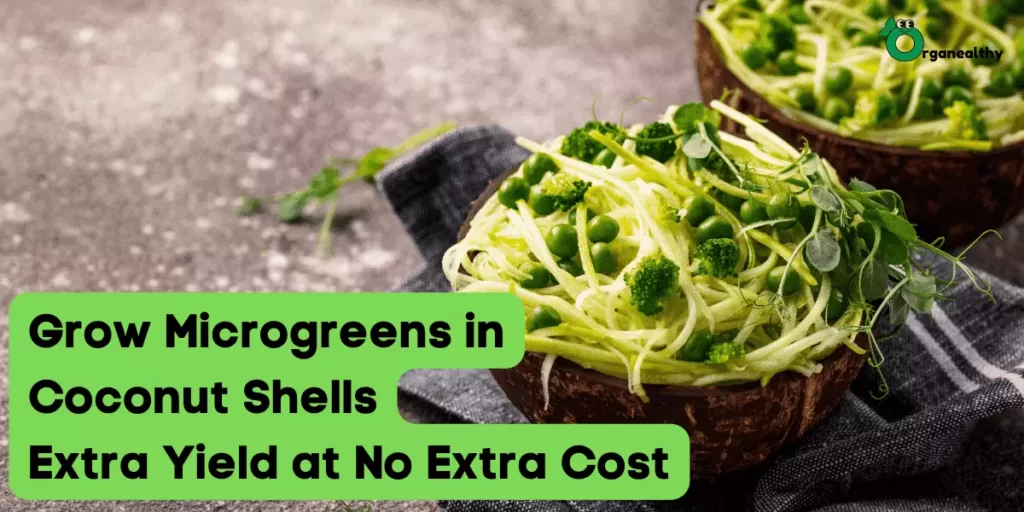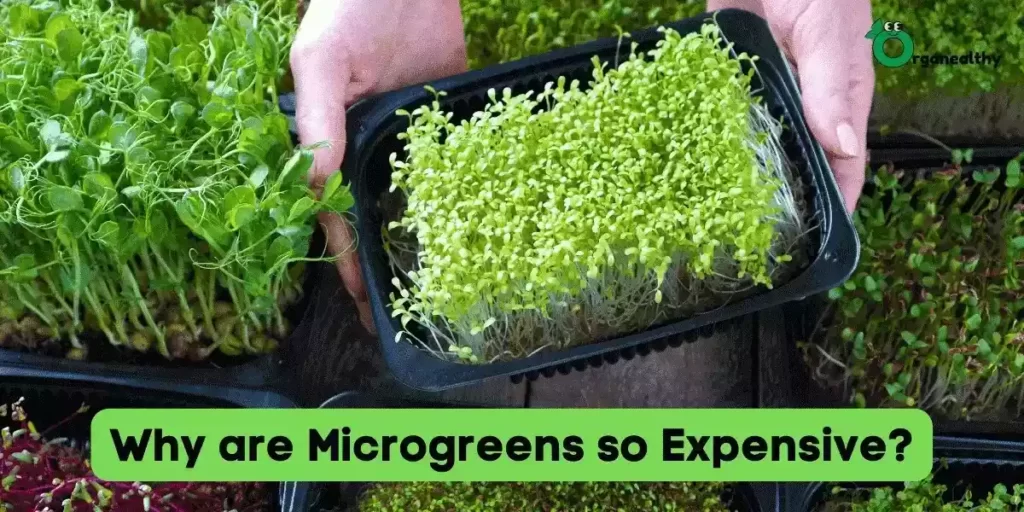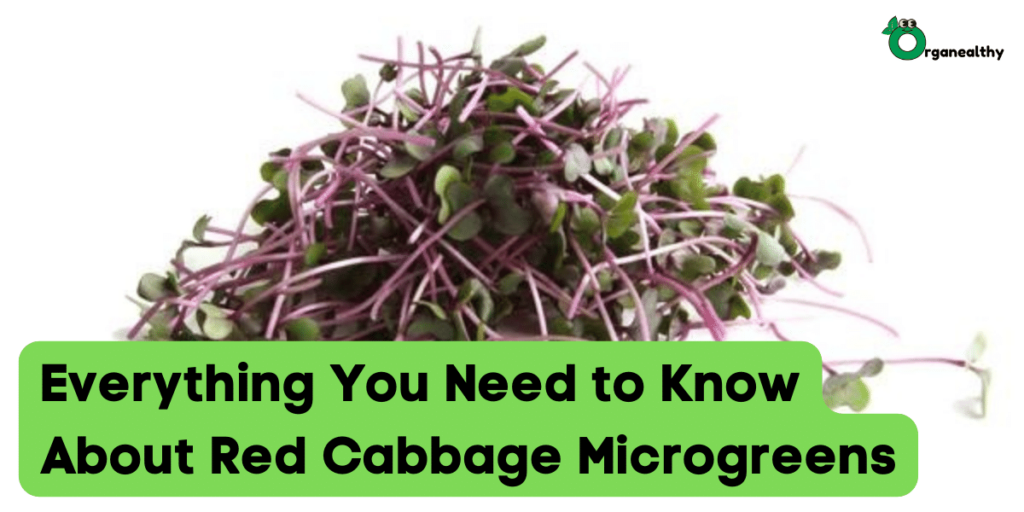Soil is undoubtedly the best medium to grow microgreens in. Some gardeners use coco coir, hemp mats, or even paper towels, but nothing can replace the quality of microgreens grown in soil.
Microgreens grown in other mediums might look identical to the ones grown in soil, but they are much more nutritious and tastier than their non-soil counterpart. Also, microgreens grow quickly in soil.
The secret to growing microgreens is a combination of good-quality seeds and good-quality soil. Ideally, a soil mix. The best soil mix for growing your microgreens is a mixture of 80% organic material (peat moss, coconut coir, and sterilized compost-like potting mix) and 20% perlite (perlite improves aeration within the soil).
However, you need to be very careful when making your own potting soil mix because the wrong combination or proportions can lead to discoloration, mold infestation, or inconsistent growth in microgreens.
In this guide, I will tell you the best soils for microgreens that you can order online or buy from a gardening store. As a bonus, I will also share how you can make your own potting soil mix if you don’t want to buy any of the recommended options.
Table of Contents
Factors to Consider Before Buying a Soil Mix for Microgreens

Choosing the right soil is crucial for the successful cultivation of microgreens. Before selecting a soil for microgreens, consider the following factors:
➡️ Sterility: Ensure that the soil is sterile or has been properly sterilized to minimize the risk of contamination and the growth of unwanted pathogens, fungi, or pests.
➡️ Texture: Opt for a lightweight and well-aerated soil mix. Microgreens have delicate roots, and a loose, friable texture allows for easy root penetration and prevents compaction.
➡️ Nutrient Content: Choose a soil mix with balanced nutrients suitable for the initial stages of plant growth. While microgreens don’t require heavily fertilized soil, they should have access to essential nutrients for healthy development.
➡️ pH Level: Check the pH level of the soil. Microgreens generally thrive in slightly acidic to neutral soils (around 6.0 to 7.0). Ensuring the right pH level promotes nutrient availability for the plants.
➡️ Organic Certification: If you prefer organic microgreens, use a soil mix that is certified organic. This ensures the soil is free from synthetic pesticides, herbicides, and fertilizers.
➡️ Moisture Retention: The soil should have good moisture retention properties without becoming waterlogged. It should allow for consistent watering and prevent the risk of overwatering or underwatering.
➡️ Drainage: Adequate drainage is crucial to prevent waterlogging, which can lead to root rot. Choose a soil mix that facilitates proper drainage and prevents excess water retention.
➡️ Seedling Compatibility: Ensure the chosen soil is suitable for seedling development. Some soil mixes may be too coarse or too fine for small seeds like red cabbage microgreens seeds.
➡️ Ease of Use: Opt for a soil mix that is easy to work with and doesn’t require complex preparation. A ready-to-use, pre-mixed soil can save time and effort. More on this in the next section!
➡️ Availability: Choose a soil mix that is readily available in your local gardening store. This ensures you can easily obtain the soil you need for your microgreen cultivation.
By considering these factors, you can select the best potting soil for microgreens that provides a conducive environment for the successful growth of microgreens, setting the stage for a healthy and abundant harvest.
Best Soils for Microgreens
Here are some of the best organic soils for microgreens. All of these soils are pre-mixed, i.e., they have an optimum combination of all the items necessary to grow your microgreens – peat moss/coco coir, organic soil, perlite, compost, and more.
All of these soils are perfectly suitable for growing microgreens indoors, they have the right pH level, optimum aeration, and texture, organic certification from OMRI, and are easily available in your nearby stores.
Most of these soils use peat moss or coconut coir as a base for their mix; both are considered the best bases for microgreens. You can use one of the two or a combination of both when making a growing base for your microgreens.
Sun Gro Black Gold Potting Mix
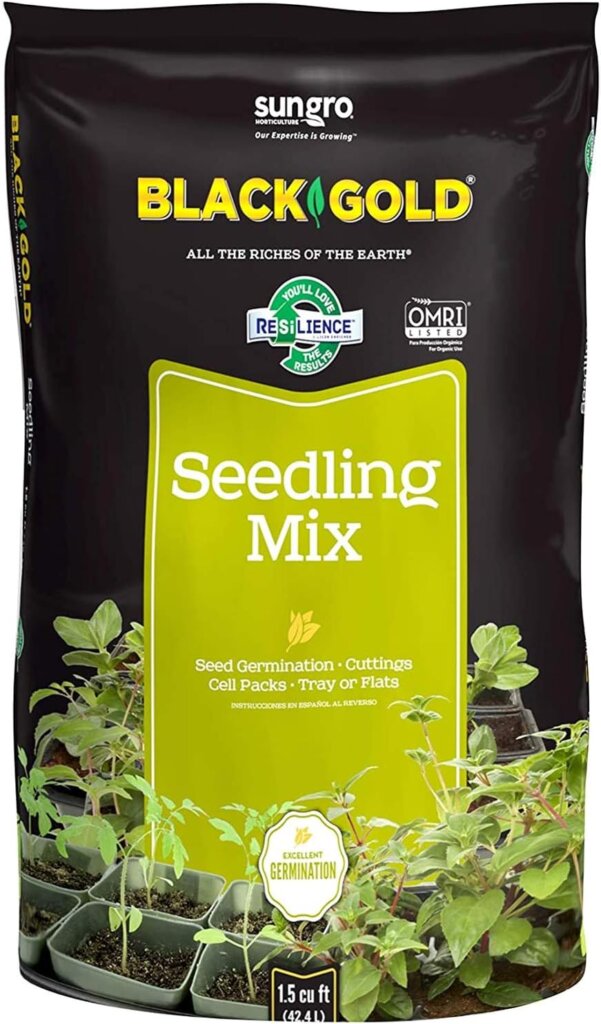
Sun Gro Black Gold Potting Mix
✅ Backed by OMRI for production of organic food and fibre
✅ Double screened, so it is ready to use out-of-the-box
✅ Excellent aeration and water retention
❌ Some growers might find it a little expensive
One of the most popular and best soils for microgreens, Sun Grow Black Gold Potting Mix is a finely screened, enriched blend of Canadian sphagnum peat moss, perlite, and screened pumice.
Some of the main features of Sun Grow Black Gold Potting Mix are:
- It has a fine texture due to the double-screening process.
- It has just the right mix of ingredients to encourage optimum aeration and water retention for the strong development of your microgreens.
- The soil mix has an organic wetting agent for healthy root growth
- The brand is backed by the certification of OMRI
This soil mix is an upgraded version of Sun Gro’s Sunshine Mix #4, which is quite a popular soil mix among microgreen growers for its peat moss + perlite mixture.
Burpee Organic Premium Growing Mix
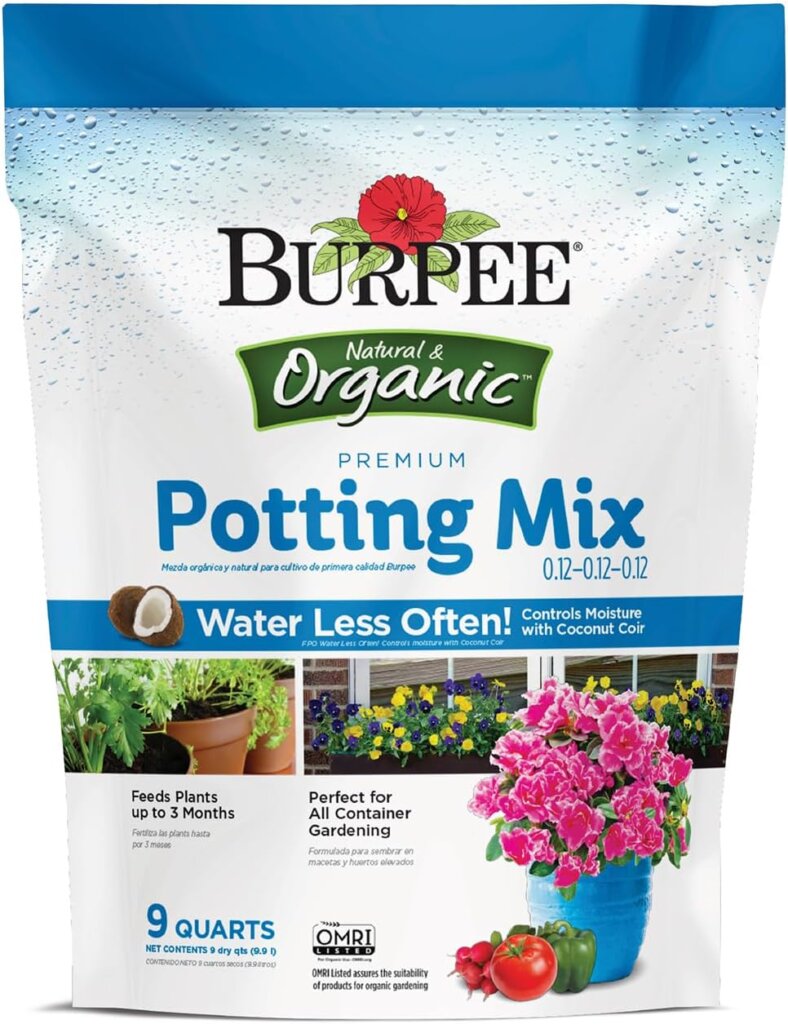
Burpee Organic Premium Growing Mix
✅ Backed by OMRI certification for organic food production
✅ Excellent moisture-retaining capacity
✅ Excellent alternative to peat-based soil mixes
✅ Feeds the plants for up to 3 months
❌ Packaging issues were reported by some buyers
Burpee’s Organic Premium Growing Mix is one of the best value-for-money soil mixes if you want to grow microgreens for profit. It is enriched with Burpee plant food and formulated with coconut coir, a sustainable and renewable resource that helps maintain moisture between watering for vibrant flowers and delicious vegetables and herbs.
Some of the main features of Burpee Organic Premium Growing Mix are:
- The compost + perlite combination provides great aeration for your microgreens.
- If you’re growing plants in this soil mix, it releases nutrients in a controlled manner to feed your plants for up to 3 months. Until then, no need to refill.
- Offers fantastic water retention due to its coco coir composition.
OMRI lists Burpee Organic Premium Grow Mix as safe for organic use. You’ll really like the soil’s quality, mix, and appearance. It works great for plants, and the compost + coco coir combination really enhances the growth of microgreens.
Espoma Organic Seed Starter Mix
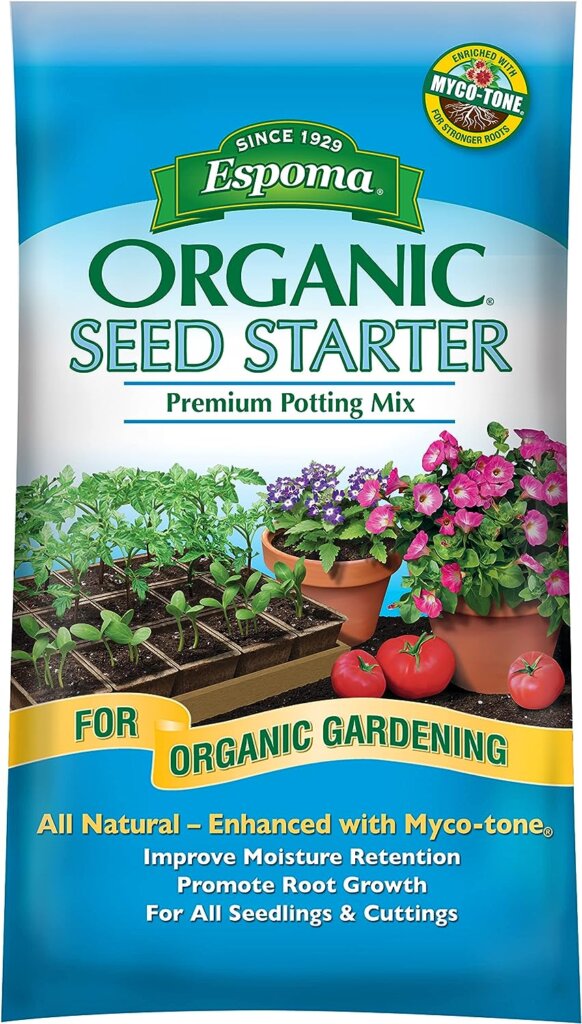
Espoma Organic Seed Starter Mix
✅ Encourages healthy root growth
✅ Less expensive, best option if you are on a tight budget
✅ Produced with Myco-Tone formula
Cons
❌ Some users complained of the moldy smell
Espoma manufactures some of the best potting soil mixes in the United States. They offer premium quality organic soil at affordable prices. Espoma Organic Seed Starter is great for novice gardeners, and it is suitable for indoor as well as outdoor gardening because its formula and consistency are suitable for all kinds of environments.
Some of the main features of Espoma Organic Seed Starter Mix are:
- Made from 80-90% sphagnum peat moss, perlite, limestone to adjust pH and yucca extract.
- Certified organic mix with myco-tone, a proprietary blend of mycorrhizae.
- Lightweight and well-draining, it provides great aeration to your microgreens.
Epsoma uses its proprietary myco-tone soil formula in its soil mixes to prevent mold infestation. The myco-tone formula blends endo and ecto mycorrhizae with some other organic materials. The formula has been proven to promote root growth, increase water uptake, and reduce drought stress and transplant shock.
Certainly, Espoma Organic Seed Starter Mix is one of the best soil mediums for microgreens.
🔔 Do check out some of the healthiest microgreens to know which ones to grow first!
Fox Farm Happy Frog Organic Potting Soil Mix
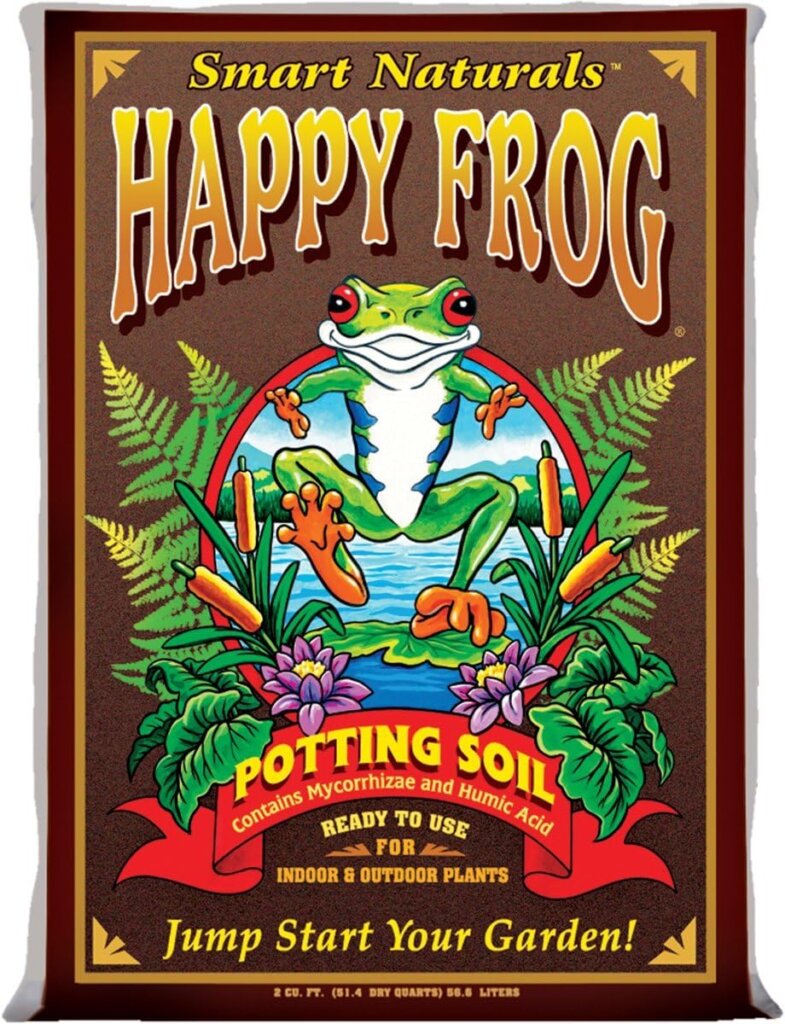
Fox Farm Happy Frog Organic Potting Soil Mix
✅ Unique mix is alive with beneficial soil microbes and mycorrhizal fungi
✅ Made with a well-researched formula
✅ Protective gloves for a few extra dollars
❌ Some users received damaged packaging
❌ pH is low
❌ Soil attracts gnats
Fox Farm’s Happy Frog Soil Mix is one of the most popular organic soil mixes for growing microgreens. I have seen many indoor gardeners on YouTube using and recommending it for growing veggies, fruits, and microgreens.
Some of the main features of Happy Frog Organic Potting Soil Mix are:
- The soil mix is made with beneficial soil microbes and mycorrhizal fungi to enhance root growth and nutrient absorption for your microgreens.
- Fox Farm adds earthworm castings, bat guano, and aged forest products to the soil mix to make it more nutritional.
- The soil is specially designed for container planting.
Some gardeners have complained that the pH of Happy Frog Soil Mix is too low, somewhere between 5.5 and 5.8, which is lower than the recommended pH of 6.0 to 7.0 for growing microgreens.
However, adding some agricultural lime can easily bring the soil mix within the neutral range (6.0 to 7.0). Sometimes, simply adding tap water to the soil can increase its pH value.
Miracle-Gro Seed Starting Potting Mix
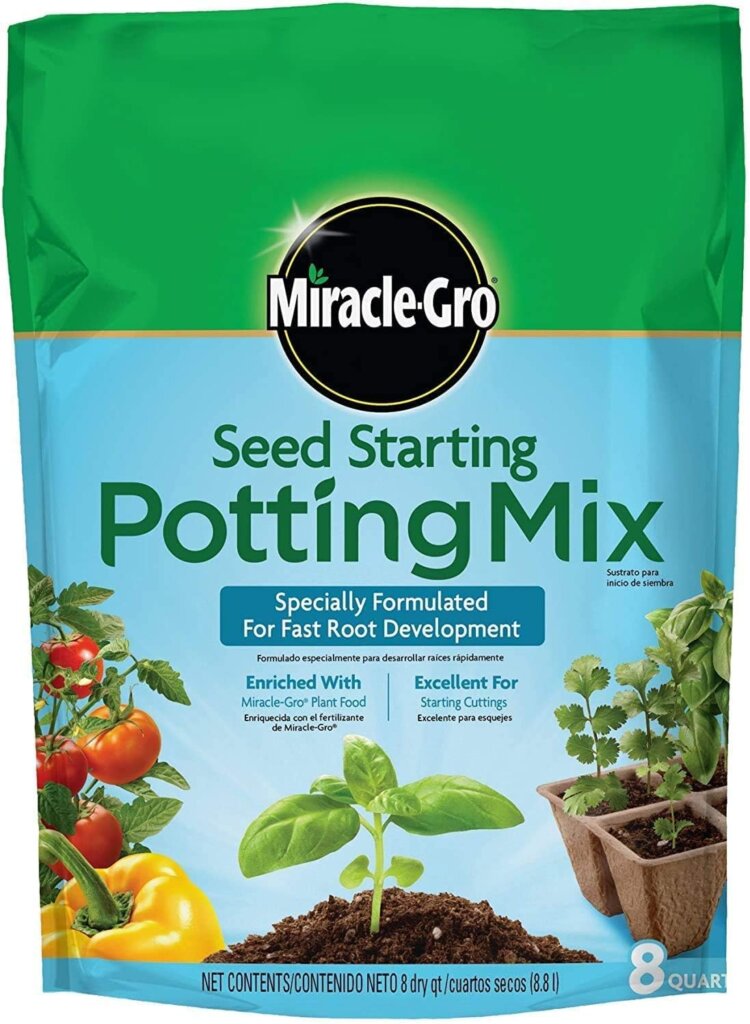
Miracle-Gro Seed Starting Potting Mix
✅ Widely available in gardening stores
✅ Specially formulated for seed germination with essential nutrients
✅ Lightweight, well-aerated texture supports delicate microgreen roots
❌ Contains synthetic fertilizers
❌ pH levels may vary
❌ Some more cost-effective, organic alternatives are available
Miracle-Gro Seed Starting Potting Mix is enriched with Miracle-Gro Plant Food and is specially formulated for fast root development. It is excellent when starting from seed or plants with leaf, stem, or root cuttings.
Some of the main features of Miracle-Gro Seed Starting Potting Mix are:
- A lightweight premium mix that is specially formulated for fast root development.
- Enables microgreens to produce a strong root network because of the nutritious Miracle-Grow plant food.
- Specially designed for container plants.
Miracle-Gro Seed Starting Potting Mix presents a compelling choice for microgreen growers, especially those seeking a convenient and trusted option focusing on nutrient-rich seed-starting formulations.
How to Make Your Own Potting Soil Mix?
Creating your own potting mix for growing microgreens allows you to tailor the blend to the specific needs of these young plants. A well-balanced mix provides the necessary support, aeration, drainage, and nutrition for healthy microgreen development.

Here’s a simple recipe for a DIY microgreen potting mix:
Ingredients:
Coconut Coir or Peat Moss:
- Retains moisture.
- Provides a structure for root development.
- Use around 50-60% of the mix.
Perlite:
- Improves aeration and drainage.
- Enhances soil structure.
- Use around 30-40% of the mix.
Vermiculite (optional):
- Retains water.
- Adds to the mix’s lightweight texture.
- Use in moderation, around 10-20% of the mix.
Compost or Well-Decomposed Manure:
- Adds nutrients to support microgreen growth.
- Provides organic matter.
- Use around 10-20% of the mix.
Fine Sand (optional):
- Improves drainage.
- Prevents soil compaction.
- Use in moderation, around 5-10% of the mix.
Instructions:
Use Coconut Coir or Peat Moss for the Base:
Start with a base of coconut coir or peat moss. These materials provide the initial structure for the mix. Moisten them before blending to improve moisture retention.
Add Perlite:
Add perlite to the mix. This lightweight material enhances aeration and drainage. Mix it thoroughly with the coconut coir or peat moss.
Use Vermiculite, If Needed:
If using vermiculite, incorporate it into the mix. Vermiculite contributes to water retention and aeration. Mix well.
Add Compost or Manure for Nutrition:
Integrate compost or well-decomposed manure for added nutrients. This organic component supports microgreen growth. Blend it evenly with the other ingredients.
Optional Fine Sand (if needed):
If your mix requires further improvement in drainage, add fine sand in moderation. This prevents soil compaction and facilitates better water movement.
Final Mixing:
Thoroughly mix all components to achieve a well-blended potting mix. Ensure an even distribution of materials for consistent growth conditions.
There is no one “golden ratio” for the right soil mix. It all depends on the type of microgreens you are growing, environmental conditions, soil quality, aeration, water retention capacity, and many other factors.
The best soil mixes for microgreens are generally coarse-grained and have a neutral pH level. This DIY potting mix provides a good starting point, and you can fine-tune it based on your observations and the requirements of the microgreens you’re cultivating.
Do You Need to Add Fertilizers to the Soil to Grow Microgreens?
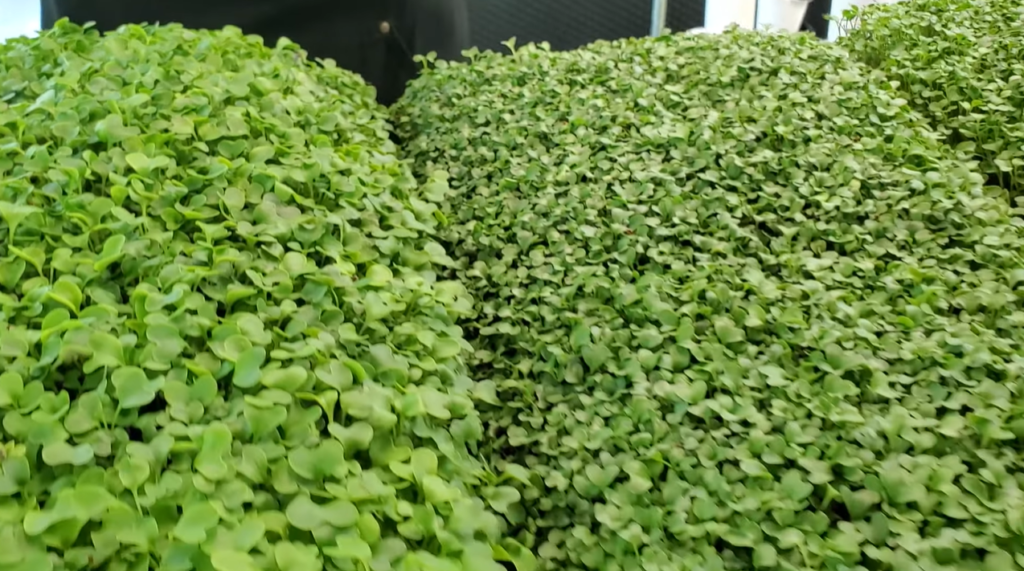
Most of these soil mixes have added nutrition that your microgreens can absorb while growing, so you don’t need to add any fertilizers to the soil mix.
However, if you are growing microgreens without soil, i.e., hydroponically, you need to spray some fertilizers on your microgreens to add nutrition. That’s because there you won’t have the nutrients from soil benefitting your microgreens’ growth.
Here’s a quick tip: if you are growing microgreens with large seeds, like Swiss chard, the seed already has a lot of energy and nutrients to give a good yield without any fertilizer.
However, smaller seeds absorb nutrients from their surrounding soil, water, and air, and a little fertilization would be beneficial, but it is not needed at all.
Also, if you are growing microgreens as a business, then adding nutrients to the microgreens via fertilization can speed up the growing process, give you a higher yield, and also allow you to boost your profits.
Can you Reuse Microgreen Soils?
No, I recommend you do not reuse the soil where you grew microgreens because the soil has now lost all of its nutrients, and it’s best you replace the growing tray with a new batch of soil before you grow microgreens again.
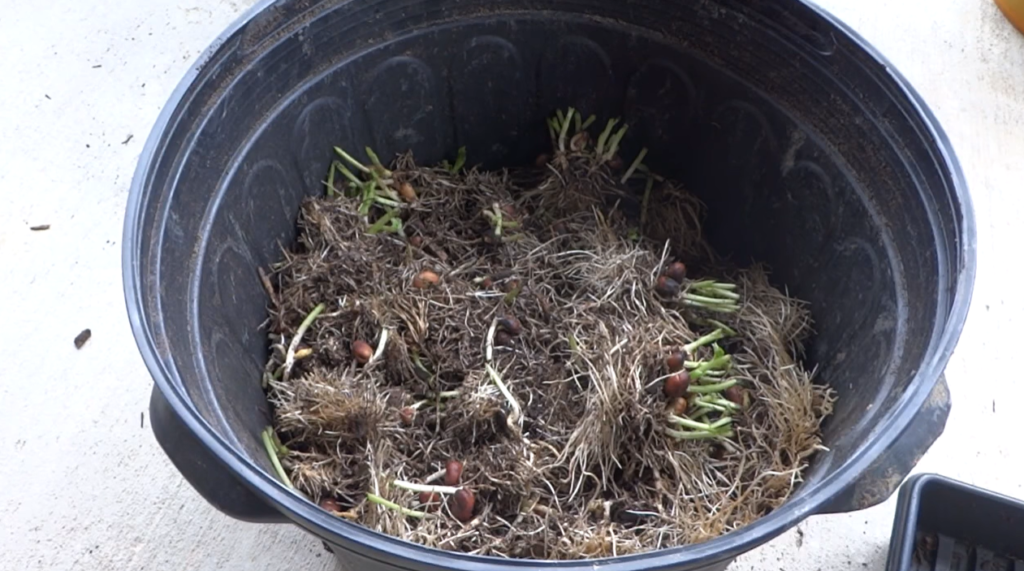
There are remnants of harvested microgreens – the roots, the leaves, etc. – in the soil, which can contaminate your next batch of microgreens. Reused soil can also affect the microgreens’ color, taste, and even their growth.
I suggest not reusing the soil but dumping it into vermicompost and letting the worms have the organic matter. You can also use a turn-it-over method to save a little on your soil expenses.
Final Thoughts
The choice of your soil matters a lot if you want to get a great yield out of your microgreen seeds. This is why choosing the best soil mix for your microgreens becomes so crucial.
I shared some of the best soils for microgreens that you can grab today from your nearest gardening store, Walmart, or Home Depot, or simply order one of the soil mixes from Amazon. You can grow most of the healthiest microgreens in these soil mixes.
Along with soil, your microgreens also need good lighting conditions to thrive, so do check out my guide on some of the best lights for microgreens before you leave.
Happy Growing! 😊



